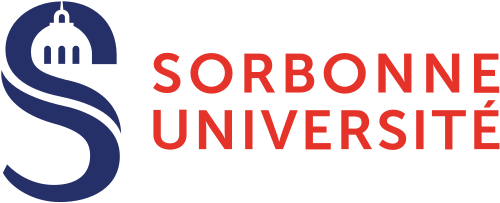The “HumanE AI Net” project is laureate of the Horizon 2020 call “Information and Communication Technologies: “ICT-48-2020”: Towards a vibrant European network of AI excellence centers.
HumaneAI Vision of European Artificial Intelligence
The “HumanE AI Net” project, which gathers 53 European institutions including Sorbonne University, aims to build a European AI center, with a focus on human-machine interactions. The research programs aim to place individuals and society in a position to perceive and understand the complex phenomena underlying AI systems, to solve problems individually and collectively, to access new forms of creativity and experience.
The core challenge is the development of robust, trustworthy AI capable of “understanding” humans, adapting to complex real-world environments, and appropriately interacting in complex social settings. The aim is to facilitate AI systems that enhance human capabilities and empower individuals and society as a whole while respecting human autonomy and self-determination.
The main implementation mechanism of the research program, collaborative microprojects involve 2-5 partners working together for a period of 1-6 months to solve a well-defined problem related to a specific scientific/technological challenge. The research results will be made available to the European AI community through the AI4EU platform and a virtual laboratory.
In addition, a series of summer schools, tutorials and MOOCs will be deployed to disseminate knowledge. On the innovation and transfer side, an industrial PhD program will be deployed to involve industrial actors from sectors crucial to the European economy.
Micro-Projects running at ISIR
(1) Coping with the variability of human feedback during interactive learning through ensemble reinforcement learning
This project entails robot online behavioral adaptation during interactive learning with humans. Specifically, the robot shall adapt to each human subject’s specific way of giving feedback during the interaction. Feedback here includes reward, instruction and demonstration, and can be regrouped under the term “teaching signals”. As an example, when exchanging objects reachable by only one partner in order to put them in various boxes, some human subjects prefer a proactive robot while others prefer the robot to wait for their instructions; some only tell the robot when it performs a wrong action, while others reward correct actions.
The main outcome will be a new ensemble method of human-robot interaction which can learn models of various human feedback strategies and use them for online tuning of reinforcement learning so that the robot can quickly learn an appropriate behavioral policy. We will start by formally deriving an optimal solution to the problem and then compare the empirical performance of ensemble methods to this optimum through a set of numerical simulations.
- Contact: Mehdi Khamassi, AMAC Team, ISIR
- Partner: Athena Research Center
(2) Learning Individual Users’ Strategies for Adaptive UIs
Adapting user interfaces (UIs) requires taking into account both positive and negative effects that changes may have on the user. A carelessly picked adaptation may impose high costs — for example, due to surprise or relearning effort. It is essential to consider differences between users as the effect of an adaptation depends on the user’s strategies, e.g. how each user searches for information in a UI. This microproject extends an earlier collaboration between partners on model-based reinforcement learning for adaptive UIs by developing methods to account for individual differences. Here, we first develop computational models to explain and predict users’ visual search and pointing strategies when searching within a UI. We apply this model to infer user strategies based on interaction history, and adapt UIs accordingly.
- Contact: Gilles Bailly, Multi Scale Interaction Team, ISIR
- Partner: Aalto University
(3) Proactive Communication in Social Robots
This micro-project falls in the general line of research of making robots more helpful to humans, while sharing the same space. In particular, we study proactive communicative behavior, where robots provide information to humans which may help them to achieve desired outcomes, or to prevent possible undesired ones. Proactive behavior in an under-addressed area in AI and robotics, and proactive human-robot communication is even more so. We will combine the past expertise of University of Sorbonne (intention recognition) and Orebro University (proactive behavior) to define proactive behavior based on the understanding of user’s intentions, and then extend it to consider communicative actions based on second-order perspective awareness. For this, we propose a cognitive architecture able to :
- estimate the human’s intention of goal,
- infer of robot’s and human’s knowledge about foreseen possible upcoming outcomes of intended goal,
- detect opportunities for desirability of intended goal to robot be proactive,
- select action from the listed opportunities.
Completed as the robot acts selected action to achieve desired outcomes, or to prevent undesirable one. The theoretical underpinning of this work will contribute to the study of theory of mind in human-robot interaction.
- Contact: Mohamed Chetouani, PIROS Team, ISIR
- Partners: Örebro University, SoftBank Robotics Europe
International Artificial Intelligence Doctoral Academy (AIDA)
The four ICT-48 networks (AI4Media, ELISE, HumanE-AI NET, TAILOR) and the VISION consortium joined forces and, under the joint initiative of VISION and AI4Media, founded a new joint instrument to support a world-level AI education and research programme called the International AI Doctoral Academy (AIDA).
Objectives:
- Coordination of the PhD/postdoc educational and training activities on AI of AIDA partners,
- Aiming high to become a world-level reference for anything related to AI education (and research),
- Defining mechanisms to create inter-university sharing of educational assets in the area of PhD-level AI,
- Envisage future efforts towards a charter for European universities to share, accredit, and recognise, PhD education credits in the area of AI.
Activities:
- AIDA AI Excellence Lecture Series,
- AI courses,
- Designing AI PhD Curricula.
Contact: Mohamed Chetouani, Professor of Sorbonne University, ISIR laboratory
Contact for the HumanE AI Net projet at ISIR: Mohamed Chetouani, Professor of Sorbonne University, ISIR Laboratory



